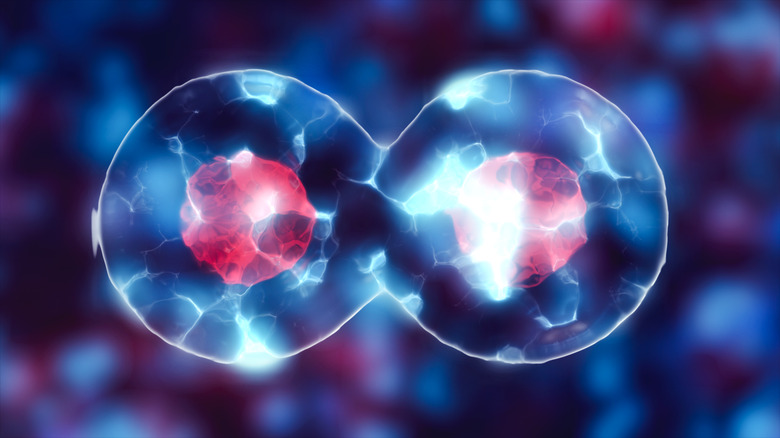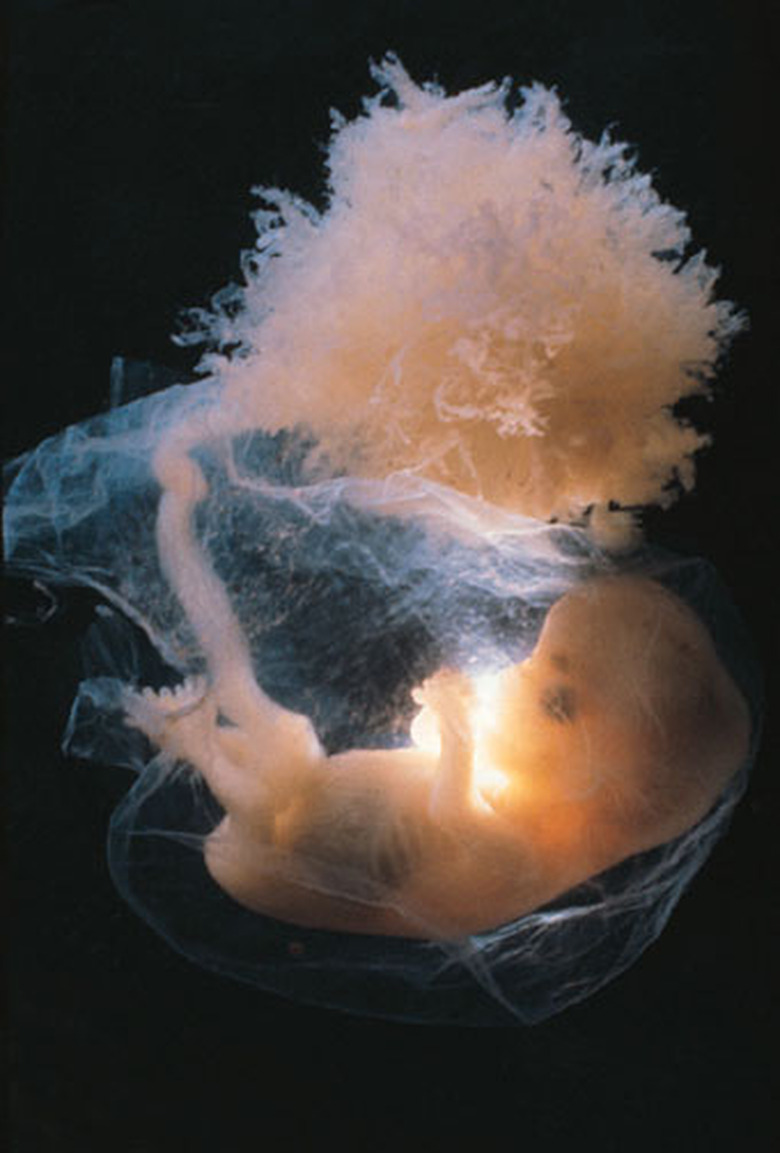Three Reasons Why Cell Division Is Important
Early in the history of biology, scientists believed cells arose spontaneously. With the development of the cell theory, people finally realized that only cells can beget other cells. In fact, two categories that define something as living or not are growth and reproduction, both of which cell division accomplishes. Cell division, also called mitosis, occurs in all living things. As living things grow, some cells die or become damaged and need replacements. Some single-celled organisms use a type of mitosis as their only form of reproduction. In multicellular organisms, cell division allows individuals to grow and change by expanding the number of total cells.
TL;DR (Too Long; Didn't Read)
Cell division is central to organism growth, reproduction and tissue repair.
Process of Cell Division
Process of Cell Division
Mitosis only takes up a small portion of the cell cycle. Cell division consists of five phases. During interphase, which comprises a majority of the cell cycle, the cell does not accomplish much of anything except to duplicate its genetic material, or DNA. Prophase sees the chromosomes thickening and moving to opposite ends of the cell. The chromosomes make a line down the middle of the cell during metaphase. Anaphase takes place when the chromosomes separate while the cell pinches in the middle. Telophase announces the end of mitosis, where the nuclear envelope re-forms around the thinning chromosomes, and the two daughter cells completely separate.
Cellular Reproduction
Cellular Reproduction
In more primitive life forms, cell division serves as a means of reproduction. Cell division for the purpose of reproduction, called binary fission, occurs in organisms that have not evolved sexual reproduction or have no use for sex. Binary fission evolved relatively early in the evolutionary scheme of life. Bacteria, one of the earliest forms of life on Earth, employ binary fission because they cannot spare the extra energy needed to find mates, make sex cells or look after offspring. Bacteria multiply many times to form colonies of organisms that genetically resemble each other. Because all individuals are clones of one another and adaptation occurs slowly, any potential changes to the environment can eradicate the entire colony.
Cellular Growth
Cellular Growth
Organisms grow either by augmenting cell size or increasing in cell number. While a multicellular organism is in its early stages of development, cells divide at accelerated rates to increase the size of the organism. Cells continue to divide to increase organism size until the organism reaches adulthood. At this point, many cells such as nerve or heart muscle cells no longer possess the ability to divide. Growth in these cells occurs only as a result of normal or pathological increases in cell sizes.
Cell Repair
Cell Repair
When injury occurs to tissues, the injury site becomes a hotbed of activity. Substances called "growth factors" present in the extracellular matrix — the structures supporting cells — stimulate tissue repair. The ECM contains materials such as water, minerals and compounds needed to mend wounds. With minor injuries, the ECM allows the tissue to regenerate itself through mitosis with no adverse consequences. With major lesions, regeneration does not ensue and fibrosis, or scarring, occurs instead.
Control of Cell Division
Control of Cell Division
Cell division usually limits itself, namely at certain checkpoints during the cell cycle. The majority of cells in the human body exist at the G0 stage of interphase, which denotes the state of nondividing cells. A cell will continue into the mitotic cycle if it receives a signal at the G1 checkpoint telling it to divide. Chemicals called kinases serve as these signals. If the cell cycle proceeds to the G2 checkpoint, maturation promoting factors push the cell into mitosis. When injury occurs, platelets — clotting factors — produce platelet-derived growth factors that cause cells called fibroblasts to divide, thus promoting healing. Cells typically stop dividing once they come into contact with other cells or form an attachment to the ECM.
When Cell Division Goes Awry
When Cell Division Goes Awry
Sometimes, mitosis becomes uncontrolled, and cancer results. Cancer cells no longer adhere to signals that cease mitosis. These abnormal entities most likely result from mutations in the genes that control cell division. Cancer cells do not behave like or resemble regular cells. The unusual cells stimulate blood vessel growth to feed themselves. At times, these cells can break free from the original cluster, or tumor, and travel through the bloodstream to set up a new tumor at another site. Given everything they need to survive, cancer cells may continue to divide forever, crowding each other and ignoring all signals to stop mitosis.
Cite This Article
MLA
Dinh, Ho-Diep. "Three Reasons Why Cell Division Is Important" sciencing.com, https://www.sciencing.com/three-reasons-cell-division-important-8289209/. 26 April 2018.
APA
Dinh, Ho-Diep. (2018, April 26). Three Reasons Why Cell Division Is Important. sciencing.com. Retrieved from https://www.sciencing.com/three-reasons-cell-division-important-8289209/
Chicago
Dinh, Ho-Diep. Three Reasons Why Cell Division Is Important last modified August 30, 2022. https://www.sciencing.com/three-reasons-cell-division-important-8289209/





